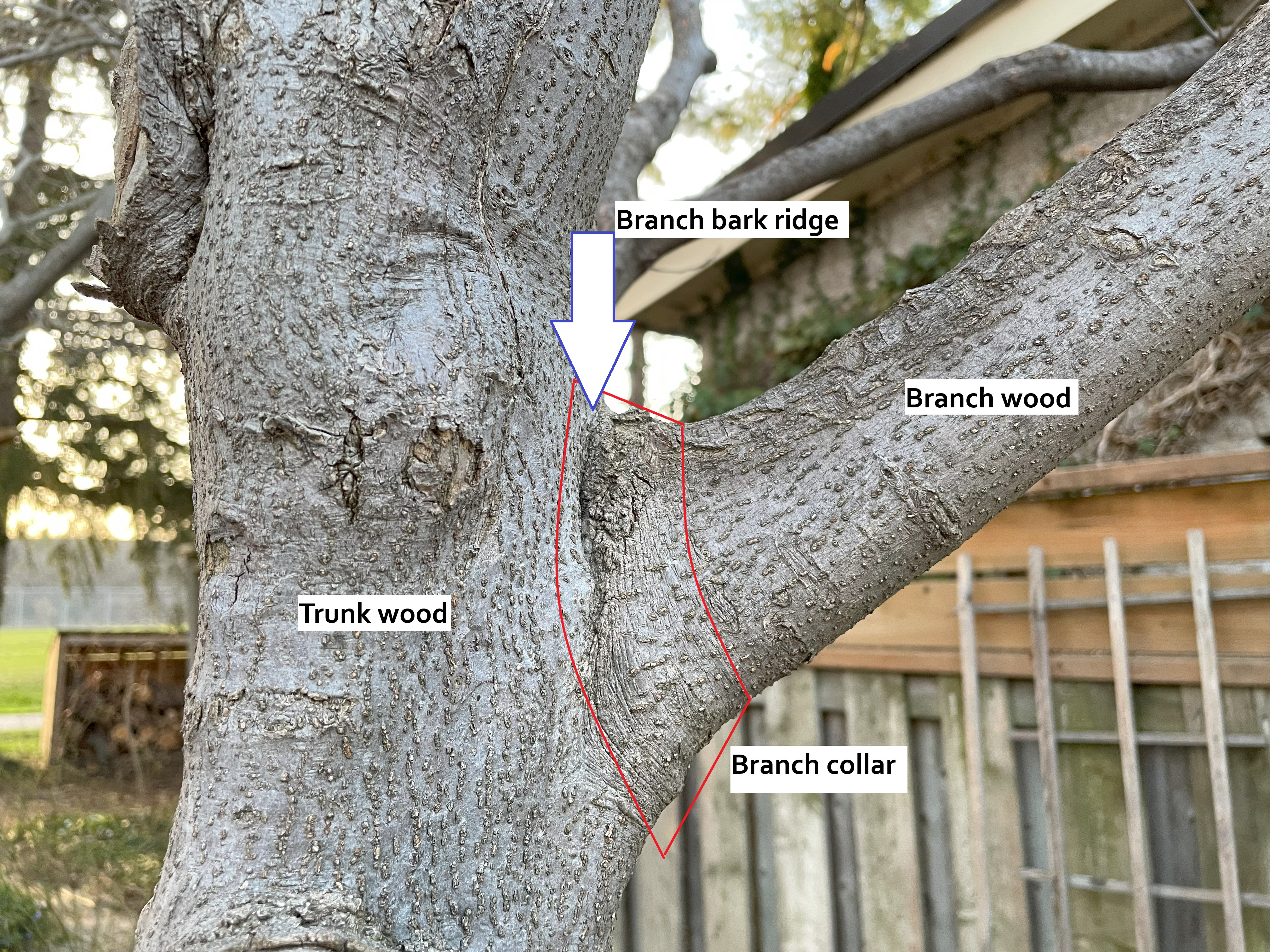|
Plant Amnesty
PlantAmnesty is a non-profit education and advocacy group based in Seattle, Washington. PlantAmnesty was founded by arborist Cass Turnbull on October 22, 1987, as a mock protest group intended to educate the public about the problems associated with pruning techniques which are biologically harmful to plants and counter productive to the goals of landscape design and management; most notably tree topping Tree topping is the practice of removing whole tops of trees or large branches and/or trunks from the tops of trees, leaving stubs or lateral branches that are too small to assume the role of a terminal leader. Other common names for the practice i .... The stated mission of the organization "is to end the senseless torture and mutilation of trees and shrubs." PlantAmnesty also provides an "adopt-a-plant" exchange for unwanted, healthy plants. References External links Plant Amnesty Horticultural organizations based in the United States Organizations established in 1987 Or ... [...More Info...] [...Related Items...] OR: [Wikipedia] [Google] [Baidu] |
Non-profit Organization
A nonprofit organization (NPO), also known as a nonbusiness entity, nonprofit institution, not-for-profit organization, or simply a nonprofit, is a non-governmental (private) legal entity organized and operated for a collective, public, or social benefit, as opposed to an entity that operates as a business aiming to generate a Profit (accounting), profit for its owners. A nonprofit organization is subject to the non-distribution constraint: any revenues that exceed expenses must be committed to the organization's purpose, not taken by private parties. Depending on the local laws, charities are regularly organized as non-profits. A host of organizations may be non-profit, including some political organizations, schools, hospitals, business associations, churches, foundations, social clubs, and consumer cooperatives. Nonprofit entities may seek approval from governments to be Tax exemption, tax-exempt, and some may also qualify to receive tax-deductible contributions, but an enti ... [...More Info...] [...Related Items...] OR: [Wikipedia] [Google] [Baidu] |
Seattle, Washington
Seattle ( ) is the List of municipalities in Washington, most populous city in the U.S. state of Washington (state), Washington and in the Pacific Northwest region of North America. With a population of 780,995 in 2024, it is the List of United States cities by population, 18th-most populous city in the United States. The city is the county seat of King County, Washington, King County, the List of counties in Washington, most populous county in Washington. The Seattle metropolitan area's population is 4.02 million, making it the List of metropolitan statistical areas, 15th-most populous in the United States. Its growth rate of 21.1% between 2010 and 2020 made it one of the country's fastest-growing large cities. Seattle is situated on an isthmus between Puget Sound, an inlet of the Pacific Ocean, and Lake Washington. It is the northernmost major city in the United States, located about south of the Canada–United States border, Canadian border. A gateway for trade with East ... [...More Info...] [...Related Items...] OR: [Wikipedia] [Google] [Baidu] |
Arborist
An arborist, or (less commonly) arboriculturist, is a professional in the practice of arboriculture, which is the Plant cultivation, cultivation, management, and study of individual trees, shrubs, vines, and other perennial woody plants in dendrology and horticulture. Arborists generally focus on the health and safety of individual plants and trees, rather than managing forests or harvesting wood (silviculture or forestry). An arborist's scope of work is therefore distinct from that of either a forester or a lumberjack, logger. Scope of work In order for arborists to work near power wires, either additional training is required or they need to be certified as a Qualified Line Clearance Arborist or Utility Arborist (there may be different terminology for various countries). There is a variety of minimum distances that must be kept from power wires depending on voltage, however the common distance for low voltage lines in urban settings is 10 feet (about 3 metres). Arborists w ... [...More Info...] [...Related Items...] OR: [Wikipedia] [Google] [Baidu] |
Protest
A protest (also called a demonstration, remonstration, or remonstrance) is a public act of objection, disapproval or dissent against political advantage. Protests can be thought of as acts of cooperation in which numerous people cooperate by attending, and share the potential costs and risks of doing so. Protests can take many different forms, from individual statements to mass political demonstrations. Protesters may organize a protest as a way of publicly making their opinions heard in an attempt to influence public opinion or government policy, or they may undertake direct action in an attempt to enact desired changes themselves. When protests are part of a systematic and peaceful nonviolent campaign to achieve a particular objective, and involve the use of pressure as well as persuasion, they go beyond mere protest and may be better described as civil resistance or nonviolent resistance. Various forms of self-expression and protest are sometimes restricted by governm ... [...More Info...] [...Related Items...] OR: [Wikipedia] [Google] [Baidu] |
Pruning
Pruning is the selective removal of certain parts of a plant, such as branches, buds, or roots. It is practiced in horticulture (especially fruit tree pruning), arboriculture, and silviculture. The practice entails the targeted removal of diseased, damaged, dead, non-productive, structurally unsound, or otherwise unwanted plant material from crop and landscape plants. In general, the smaller the branch that is cut, the easier it is for a woody plant to compartmentalize the wound and thus limit the potential for pathogen intrusion and decay. It is therefore preferable to make any necessary formative structural pruning cuts to young plants, rather than removing large, poorly placed branches from mature plants. Woody plants may undergo a process referred to as ''self-pruning'', where they will drop twigs or branches which are no longer producing more energy than they require. It is theorized that this process can also occur in response to lack of water, in order to reduce the ... [...More Info...] [...Related Items...] OR: [Wikipedia] [Google] [Baidu] |
Landscape Design
Landscape design is an independent profession and a design and art tradition, practiced by landscape designers, combining nature and culture. In contemporary practice, landscape design bridges the space between landscape architecture and garden design. Design scope Landscape design focuses on both the integrated master landscape planning of a property and the specific garden design of landscape elements and plants within it. The practical, Design, aesthetic, Horticulture, horticultural, and environmental sustainability are also components of landscape design, which is often divided into hardscape design and softscape design. Landscape designers often collaborate with related disciplines such as architecture, civil engineering, surveying, Landscaping, landscape contracting, and artisan specialties. Design projects may involve two different professional roles: landscape design and landscape architecture. * Landscape design typically involves artistic composition and artisanship, ... [...More Info...] [...Related Items...] OR: [Wikipedia] [Google] [Baidu] |
Tree Topping
Tree topping is the practice of removing whole tops of trees or large branches and/or trunks from the tops of trees, leaving stubs or lateral branches that are too small to assume the role of a terminal leader. Other common names for the practice include hat-racking, heading, rounding over, and tipping. Some species of trees are more likely to recover from topping than others. There are alternatives to topping that can help to achieve the same goals without damaging trees. Purpose Hundreds of large trees are topped each year, which causes significant stress and future safety issues. It has been shown through survey that the average person's knowledge on tree care is limited. Another popular misconception is that a topped tree will benefit from increased light penetration. The removal of a large portion of a tree's canopy can have detrimental effects. When a tree is topped, newly formed bark may be susceptible to sun scald (flora), sun scald. Prolonged exposure can severely damage ... [...More Info...] [...Related Items...] OR: [Wikipedia] [Google] [Baidu] |
Horticultural Organizations Based In The United States
Horticulture (from ) is the art and science of growing fruits, vegetables, flowers, trees, shrubs and ornamental plants. Horticulture is commonly associated with the more professional and technical aspects of plant cultivation on a smaller and more controlled scale than agronomy. There are various divisions of horticulture because plants are grown for a variety of purposes. These divisions include, but are not limited to: propagation, arboriculture, landscaping, floriculture and turf maintenance. For each of these, there are various professions, aspects, tools used and associated challenges -- each requiring highly specialized skills and knowledge on the part of the horticulturist. Typically, horticulture is characterized as the ornamental, small-scale and non-industrial cultivation of plants; horticulture is distinct from gardening by its emphasis on scientific methods, plant breeding, and technical cultivation practices, while gardening, even at a professional level, tends to f ... [...More Info...] [...Related Items...] OR: [Wikipedia] [Google] [Baidu] |
Organizations Established In 1987
An organization or organisation (Commonwealth English; see spelling differences) is an entity—such as a company, or corporation or an institution (formal organization), or an association—comprising one or more people and having a particular purpose. Organizations may also operate secretly or illegally in the case of secret societies, criminal organizations, and resistance movements. And in some cases may have obstacles from other organizations (e.g.: MLK's organization). What makes an organization recognized by the government is either filling out incorporation or recognition in the form of either societal pressure (e.g.: Advocacy group), causing concerns (e.g.: Resistance movement) or being considered the spokesperson of a group of people subject to negotiation (e.g.: the Polisario Front being recognized as the sole representative of the Sahrawi people and forming a partially recognized state.) Compare the concept of social groups, which may include non-organiza ... [...More Info...] [...Related Items...] OR: [Wikipedia] [Google] [Baidu] |






